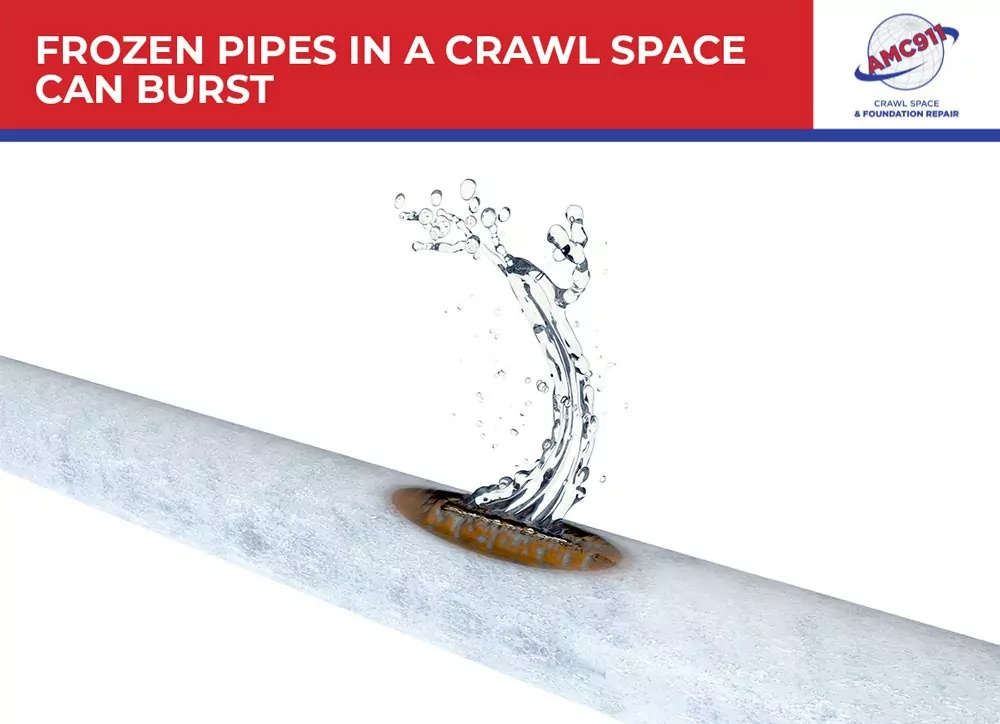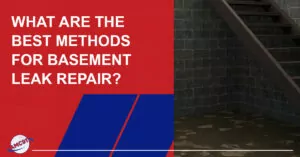Have you ever found yourself in the middle of winter and dealing with a disaster caused by frozen pipes? Discovering that one of your pipes has frozen can be stressful and expensive. Fortunately, there are ways to prevent this from happening. Regularly inspecting the crawl space under your home for leaking or damaged pipes and using pipe insulation when temperatures drop below freezing are essential steps to take.
In this blog post, we will discuss how you can protect your home’s plumbing during cold weather by implementing preventative measures. Continue reading to learn what other steps you should take to keep water flowing freely in even the most frigid conditions!
Why Do Pipes In a Crawl Space Sometimes Freeze?
Pipes located in a crawl space are particularly vulnerable to freezing due to several factors.
One of the leading causes is the fact that crawl spaces are often poorly insulated and can be exposed to cold air from outside. This can create a convection current that draws cold air through the space, causing the pipes to cool rapidly—and potentially freeze.
Another critical factor is the proximity of the pipes to the ground. If the ground is particularly cold, it can act as a heat sink, further cooling any water flowing through the pipes.
Frozen Pipes in a Crawl Space Can Burst
Frozen pipes in a crawl space can have catastrophic results on the plumbing system of a building. When water inside a pipe freezes, it expands, causing pressure on the walls of the pipe. As the pressure continues to build, the pipe eventually bursts, leading to water damage to the property and expensive repairs.

Additionally, water damage from burst pipes can lead to mold growth, which can be hazardous to the health of the building’s inhabitants. Not only does mold cause respiratory problems, it also damages the structural integrity of the building.
It is crucial to take preventative measures to avoid frozen pipes. Insulating pipes that are exposed to low temperatures can help keep them from freezing. In addition, ensuring that crawl spaces are insulated is vital.
In the case that pipes do freeze, it is essential to handle them with care. Never use an open flame to thaw a frozen pipe, as it can cause a fire hazard and damage the pipe further. Instead, use a hair dryer or heating pad.
How to Keep Pipes from Freezing in the Crawl Space
Fortunately, there are several practical and effective measures that can be taken to help safeguard your pipes and prevent them from freezing. These include the following:
Wrap the Pipes with Insulation
Insulating the pipes that run through the crawl space is a crucial step in protecting them from freezing. By wrapping them with insulation and sealing all gaps and cracks, you create a barrier that prevents the cold air from penetrating the pipes and freezing the water inside.
Cover the Pipes with Heating Tape
Covering the pipes with heating tape is another effective solution for keeping pipes from freezing in a crawl space. This tape produces heat and can be attached to the pipes to maintain warm temperatures, which helps prevent water from freezing. It’s particularly useful for pipes in the farthest or coldest areas, where insulation alone may not be sufficient.
Insulate the Crawl Space
Another option is insulating the crawl space, ensuring that the temperature stays above freezing. Adding additional insulation to the floor and walls of the crawl space will keep the area warmer and reduce the likelihood of the pipes freezing. However, keep in mind that while insulating the crawl space is effective, it may require professional assistance to do so safely and effectively.
Encapsulate the Crawl Space
Additionally, encapsulating the crawl space by covering its walls and floor with a thick, vapor-retarding barrier can further reduce the amount of cold air that seeps into the space, ultimately protecting the pipes from freezing.

Let Water Drip from the Faucet
Letting water drip from the faucet is another method that can be used to prevent pipes from freezing. This is because water movement through the pipes creates friction and heat, ultimately resulting in warmer temperatures in the pipes.
For more information, see our article Why a High Crawl Space Humidity Level Can Spell Disaster for Your Home.
Signs That Your Pipes Are Frozen
Some common signs that your pipes may be frozen include:
- Reduced or no water flow from faucets
- Strange noises coming from pipes, such as banging or whistling
- Pipes that feel cold to the touch or have frost or ice on them
- Your water pressure has decreased
- Your toilet won’t flush
If you suspect that your pipes are frozen, it is essential to act quickly. Ignoring the problem can lead to bursting pipes, extensive water damage, and costly repair bills.
If you’re concerned about the pipes in your home’s crawl space, contact AMC911 today to schedule a free crawl space inspection and receive a repair estimate.















